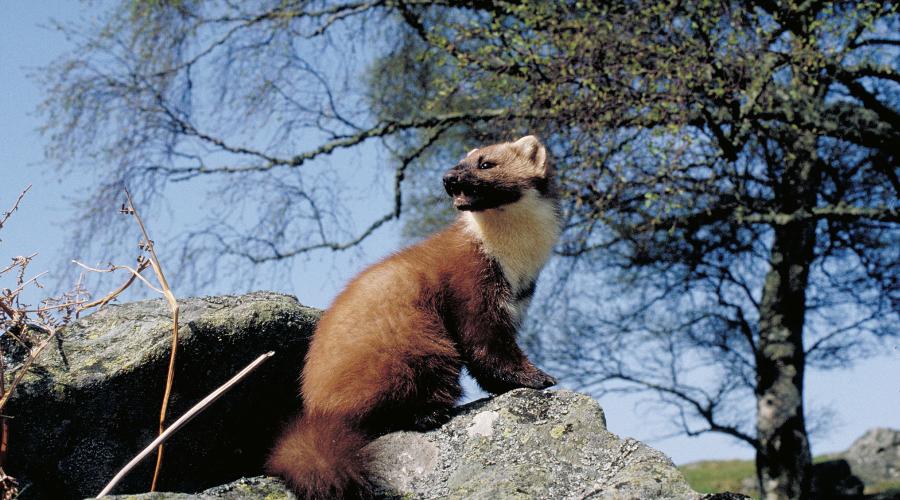
Pine martens and licensing
NatureScot can issue licences to legally permit works affecting pine martens for a variety of reasons.
Issues for homeowners
Pine martens can sometimes cause problems by using a house (usually the roof-space) as a den. Within dwelling houses, certain activities that would normally be offences are exempt.
You therefore don’t require a licence to:
- disturb pine martens to discourage them from using a house
- block the access point to a den site in a house (as long as no pine marten is present at the time)
You must have a licence to move young pine martens. Contact us for advice if any young are present.
Living with Pine Martens: A guide to the pine marten in Scotland
Surveys, research and education
Basic pine marten surveys don’t require a licence, provided that you take steps to avoid intentionally or recklessly disturbing animals in their dens.
You should apply to us for a licence if this can’t be avoided or if scientific or research work could otherwise result in an offence in relation to pine martens.
To apply for a licence, email [email protected].
You should include:
- your name, address and telephone number
- full details of your project – covering what and who will be involved, and where and when
- a completed licence application reference form (if applicable)
If this is your first licence application for this activity, we’ll need two references from you. Your referees should be familiar with your work in this area and able to vouch for your competence.
Movement of animals
Any proposed translocations involving the licensed capture of wild pine martens in Scotland must comply with the Scottish Code for Conservation Translocations.
Licence applications must:
- show effective liaison between the various different translocation projects
- detail measures to be implemented to protect the long-term viability of affected donor populations
We have provided a Restoring Britain’s pine martens joint statement, with Natural England and Natural Resources Wales, setting out the important issues that need to be considered for proposed conservation translocations.
Predator control
It’s illegal to intentionally or recklessly capture or kill a wild pine marten. But we may license the control of pine martens to conserve wild bird populations.
To apply for a licence, you must provide evidence that pine marten predation is causing a decline in a population. We must also consider the affected wild bird species in need of direct conservation action.
Download the Licence application form – to control predatory protected species for conserving wild birds
Social, economic or environmental purposes
A protected species licence application for development projects should not be made until the necessary planning permissions and consents are in place. This should be considered when signing the relevant licence application declaration.
We can license activities for social, economic or environmental reasons (including development) that might affect pine martens, as long as:
- the licensed activity will contribute to significant social, economic or environmental benefit
- there is no satisfactory alternative
- there will be no significant negative impact on the conservation status of the species
Download the Licence application form – works affecting pine martens
Read the guidance on Licences for social, economic or environmental purposes
Read the guidance on Test 2 – No satisfactory alternative
If pine martens are likely to be present on or near to a site, we strongly recommend that a suitably experienced person conducts a survey. Where martens or dens are found, a species protection plan should be drawn up.
Possession of specimens
The Wildlife and Countryside Act 1981 bans the possession of a dead pine marten or a part of one. But a licence isn’t required to possess a specimen if you can show that it was killed or taken legally.
Licence changes and renewals
You should get in touch if you wish to amend a licence. But check your licence conditions first: you may be able to appoint agents and assistants without having to get them named on your licence.
Find out about adding persons to a licence.
You must also remember to contact us to renew your licence. Licences aren’t renewed automatically.
Find out more
Accompanying notes for survey and monitoring licences
Planning and development: protected animals
Contact
If you already have a licence number, include it in the subject line of your email, or have it to hand when you call.





